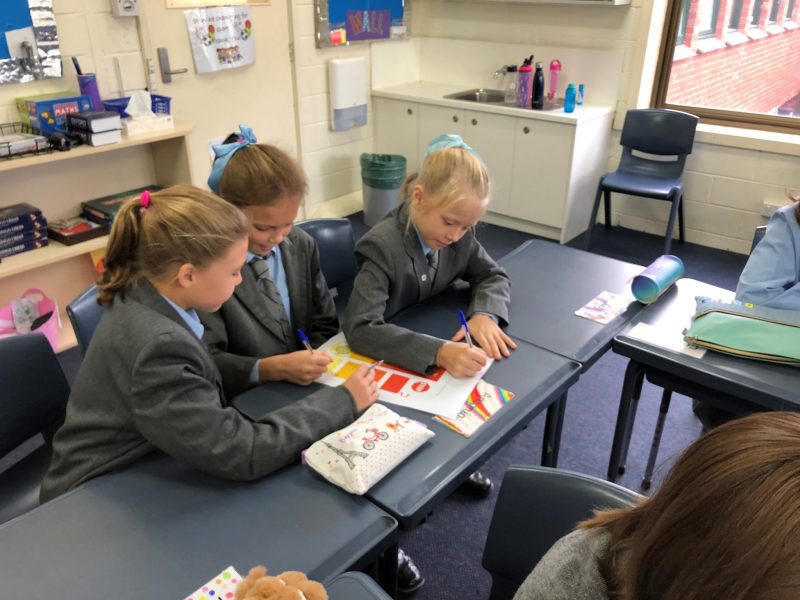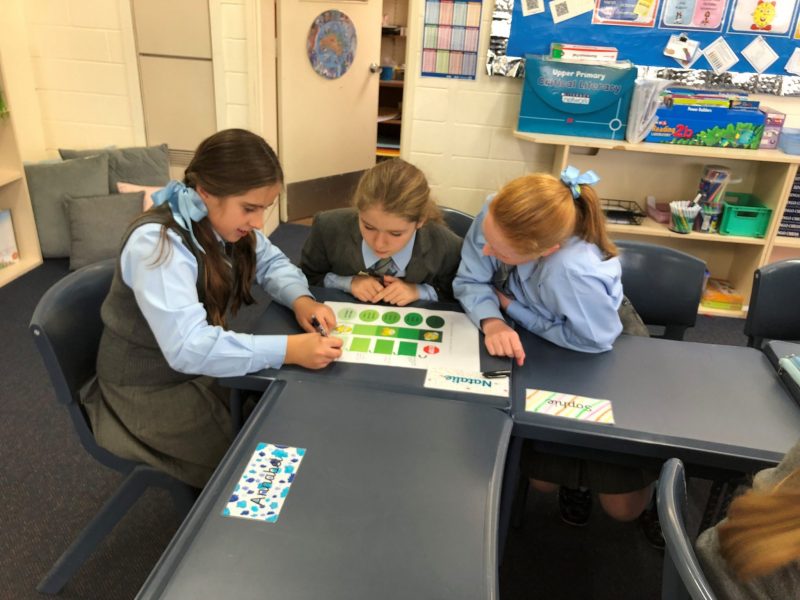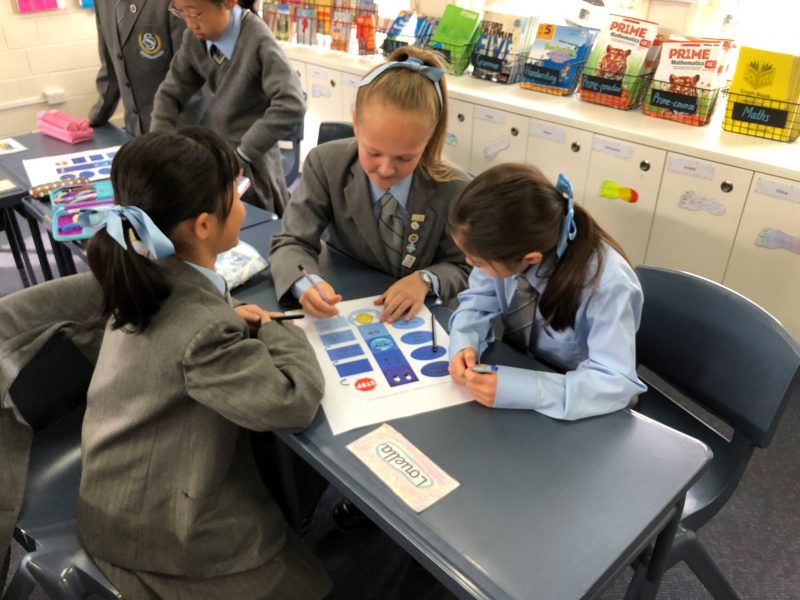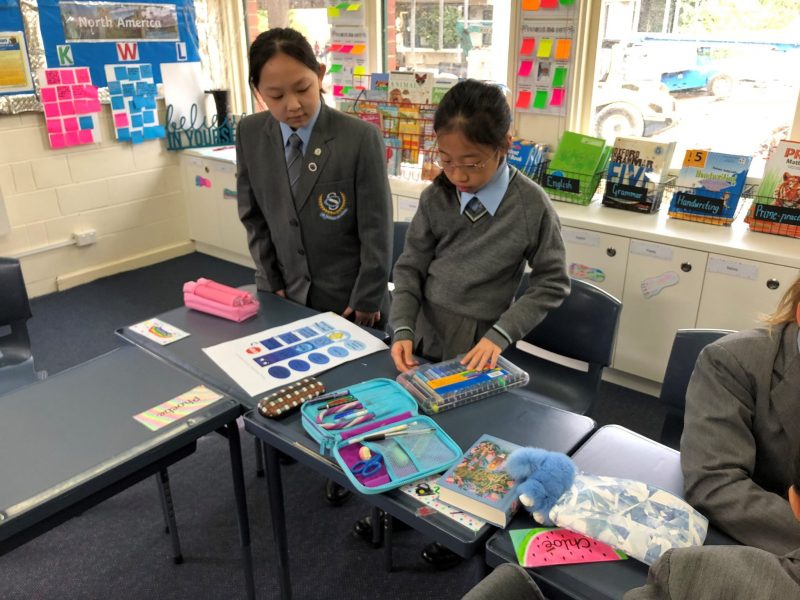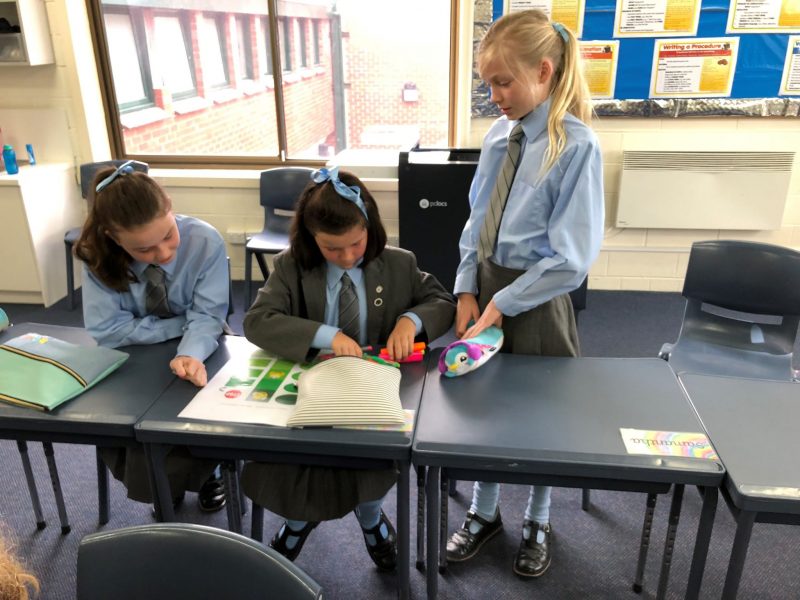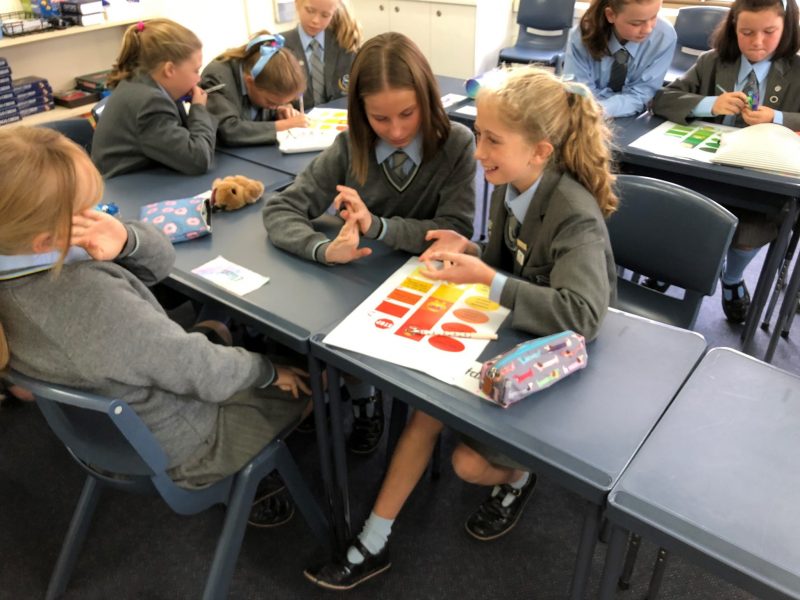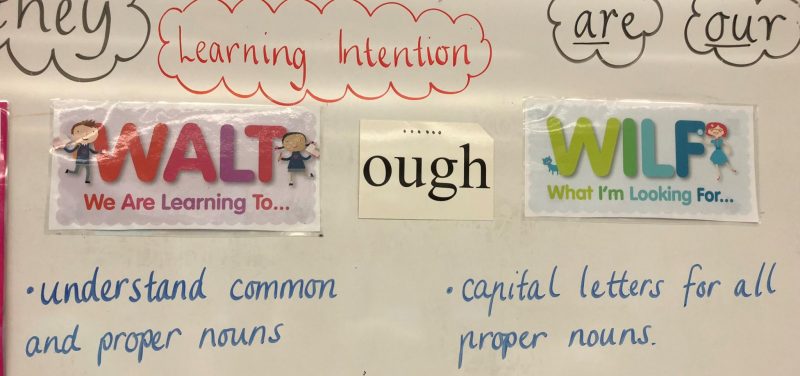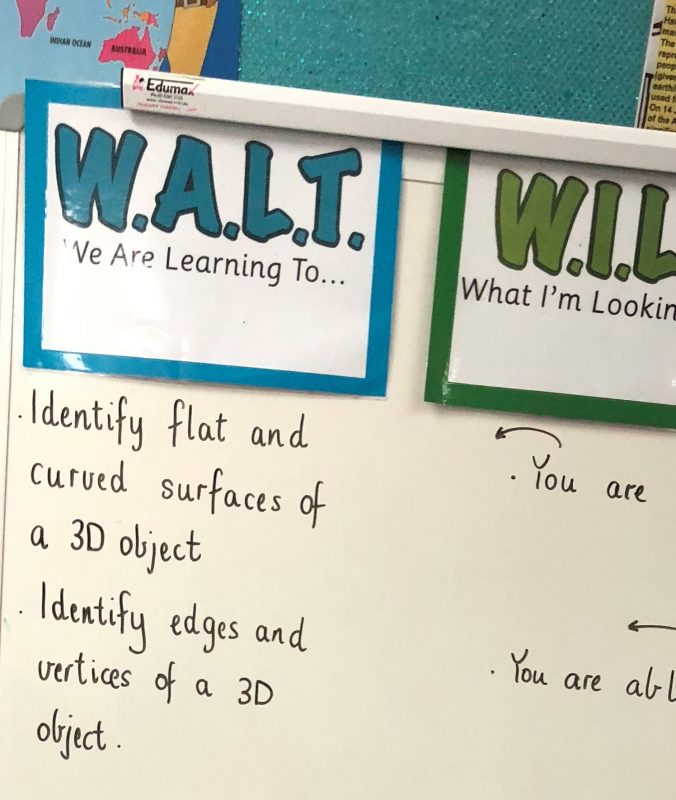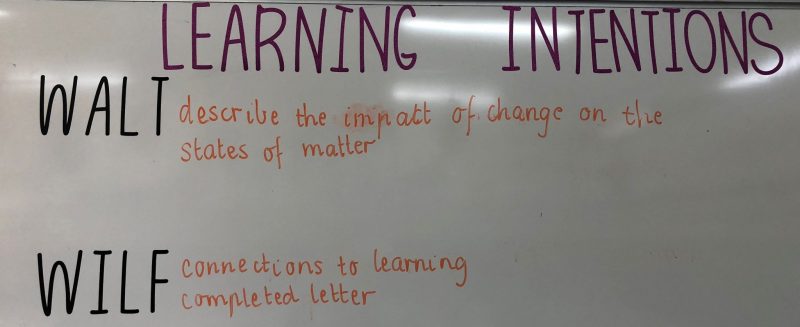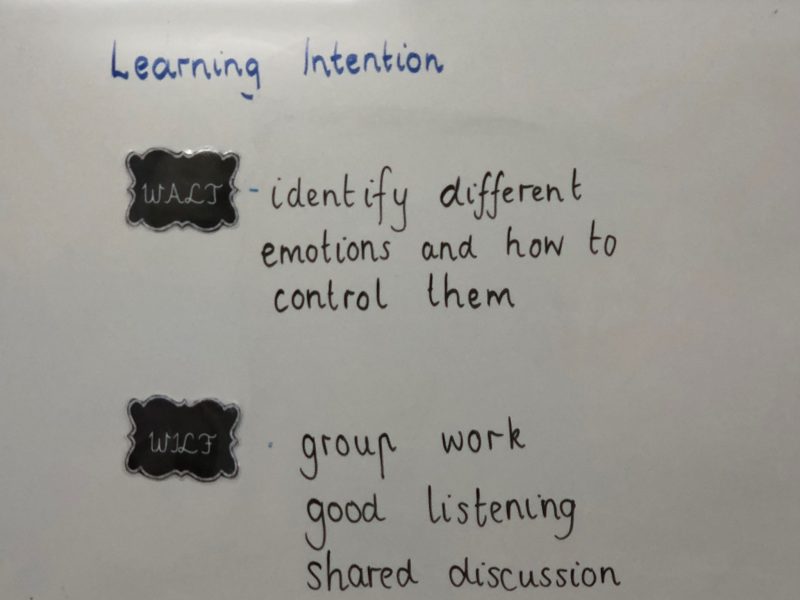Barbreck News
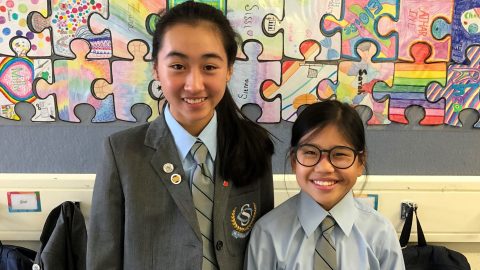
Wellbeing at Year 5
In our Year 5 Wellbeing program, students have been focusing on how to identify and control different emotions using a Feelings Thermometer.
Using lessons from the Swinburne University Aristotle Programme, we have learned a range of words to express different emotions and have shared our thoughts on what kind of situations can make us feel particular emotions. We also apply ‘characters’ to certain emotional states, such as, Storm Cloud Me, My Guard Dog or Wise Owl Me, to help visualise emotions and the physical response that often goes with them. Once we can identify the emotion we feel, we can put in place strategies to help us move from being in an extreme emotional state to feeling calm and in control.
Antonia Kallifidas, Sophie Lovell and Louella Simpson suggest taking deep breaths or squeezing a stress-ball to move from emotions of dread and panic to calm and happy.
Annabel Calvert, Poppy Maling and Eliza McCurdy suggest removing yourself from the situation and doing mindful breathing to move from feelings of anger and frustration to feelings of calm and control.
Natalie Wang, Samantha Hine and Chloé Favaloro suggest finding activities that you enjoy and talking to someone can help move from sad and miserable emotions to happy and calm emotions.
Learning Intentions in the Junior School
“Learning intentions describe what it is we want students to learn in terms of the skills, knowledge, attitudes, and values within any particular unit or lesson,” John Hattie, Professor of Education and Director of the Melbourne Education Research Institute at the University of Melbourne.
In the Junior School, we use Learning Intentions to make learning visible to students. We provide clear statements about the purpose and the rationale for learning, as well as clear expectations about what students need to know and do.
Research shows that teachers who are clear about what they want their students to learn have a higher impact on their students (Hattie, J. (2009). Visible Learning: A Synthesis of 800 Meta-Analyses Relating to Achievement. Routledge). Learning intentions allow students to stay focused on the lesson’s purpose, and understand what they are learning rather than what they are doing. In addition to learning intentions, success criteria explicitly state to the students what we are looking for and what they are trying to achieve.
WALT and WILF is a tool we use in our Junior School classrooms to encourage students to be more actively involved in their learning and clear about the purpose of their learning. It is used to explicitly highlight to the students what they are being asked to do (WALT = We are learning to…) and what we hope they will learn (WILF = What I’m looking for…). You will notice these signs are up in every classroom.
SSV District Golf
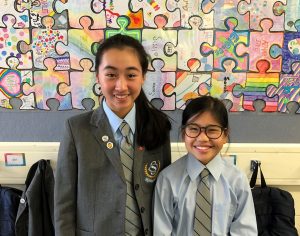 A very special congratulations to Hannah Wong and Qing Chun (Joanna) Yang who recently competed in the SSV District Golf. Both girls should be incredibly proud of their achievements. Hannah came first in the competition and Joanna fifth. An outstanding effort and result for both girls.
A very special congratulations to Hannah Wong and Qing Chun (Joanna) Yang who recently competed in the SSV District Golf. Both girls should be incredibly proud of their achievements. Hannah came first in the competition and Joanna fifth. An outstanding effort and result for both girls.
NAPLAN Testing 2018
The National Assessment Program 2018 (NAPLAN)
This week the Year 3 and Year 5 students completed NAPLAN testing. The testing went very smoothly with close to every student in Year 3 and Year 5 completing the NAPLAN tests. For those students who were absent on the day catch-up sessions were arranged.
As much as we try to make the NAPLAN testing just a regular part of the School week, it can still be a little daunting and tiring for some. The girls were conscientious throughout the testing and tried their very best. They should be congratulated on their efforts and concentration.
The NAPLAN assessment measures achievement in literacy and numeracy. Its primary purpose is to provide the government, education authorities, and schools with data that can help determine whether or not young Australians have the literacy and numeracy skills that provide the critical foundation for other learning, and for students’ productive and rewarding participation in the community.
However, the tests also provide the School with information about how education programs are working and which areas may need to be prioritised for improvement. In addition to this, they provide parents and schools with an understanding of how individual students are performing at a particular point in time. It allows us to identify the strengths and areas for improvement within the School and provide classroom teachers with information as to how the students’ achievement compares to a wider group of students across Australia. Individual reports can also be used to inform discussion between parents and teachers.
In the Junior School, we have an extensive and on-going assessment schedule, which is determined by classroom and support teachers. Assessments incorporate a combination of formative and summative assessments, providing us with invaluable information about each student’s performance. NAPLAN tests are another piece of valuable data that we collect as part of this process.
Mathematics in the Junior School
Within the Junior School, our goal is to build the girls’ competence, confidence and interest in Mathematics, through the delivery of a rich and engaging sequential Mathematics program, and by providing different opportunities to participate in Mathematics related activities both inside and outside of the classroom.
Our Mathematics program aims to develop students’ thinking, fluency and understanding in Mathematics. We want to encourage students to explore possibilities, and develop bold problem-solving approaches and skills. We want them to take risks in their learning, focusing on how and why, rather than just the answer. When students have greater confidence, they give themselves the freedom to take risks in learning, and to engage in trial-and-error processes that are fundamental to acquiring knowledge in Mathematics.
As with Literacy, it is also critical we build strong foundations in Numeracy. From Prep through to Year 6, the Mathematics program focuses on building strong foundations across the three strands of Mathematics as outlined in the Victorian Curriculum – Number and Algebra, Measurement and Geometry, and Statistics and Probability. Lessons are carefully planned and differentiated to cater to the individual needs and thinking styles of students.
In the classroom, students learn Mathematics in many different ways – through manipulation of concrete materials, modelling of Mathematics problems, practising processes, talking about problems, drawing and writing, playing games, and using ICT. Activities are designed to move students from being concrete learners to developing their ability to mentally process information and become abstract thinkers. Within this, the children are challenged to extend this understanding to solve problems. The automatic response of number facts and mathematical tables are also a major focus. These are developed through maths challenges, games and activities.
In addition to the core classroom program, from Year 1 to Year 6 we introduce differentiated Mathematics support and problem solving groups that allow the individual needs of students to be focused on by working in like-ability groups. During these sessions, students have the opportunity to build on their understanding of mathematical concepts at their instructional level.
From Year 1 through to Year 6 classrooms teachers team-teach to provide additional support to students who may benefit from extra tuition, building their understanding around fundamental Mathematics concepts. Sometimes students may be withdrawn in small groups to reinforce a concept or, at other times, they will work within the classroom with additional support from the extra teacher in the classroom.
From Year 2 to Year 6, for those students who display a strong aptitude towards Mathematics, there is an extension Mathematics program. From Year 2 to Year 4 students may be involved in more challenging Mathematics Problem Solving groups, and in Year 5 and Year 6 students may be part of a Maths Master Class program, in which Senior School teacher and expert Mathematician Mrs Amanda Ladbury-Webb works through challenging mathematical tasks. This wonderful opportunity provides additional challenge for those students.
Through the delivery of a robust, engaging and challenging Mathematics program we hope to develop students who are competent and confident with mathematical concepts; easily, seamlessly and unconsciously drawing on what they have learnt to solve everyday problems, see patterns and relationships in the world around them and incorporating processes of questioning, reflecting, reasoning and proof.


